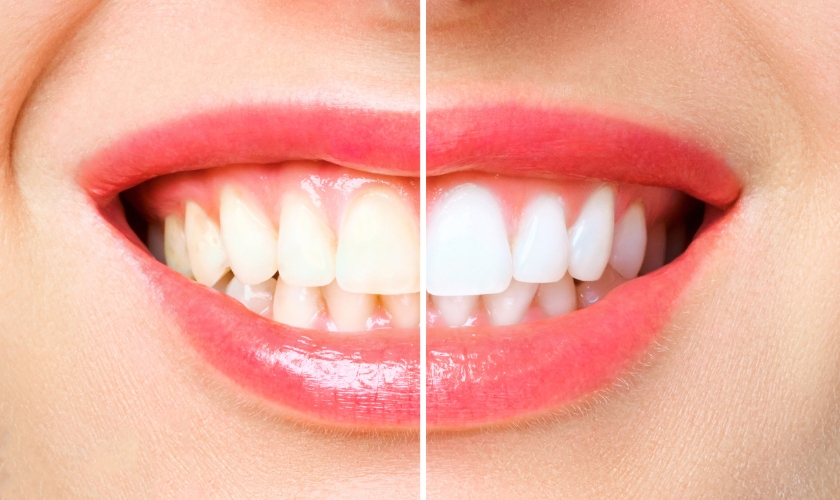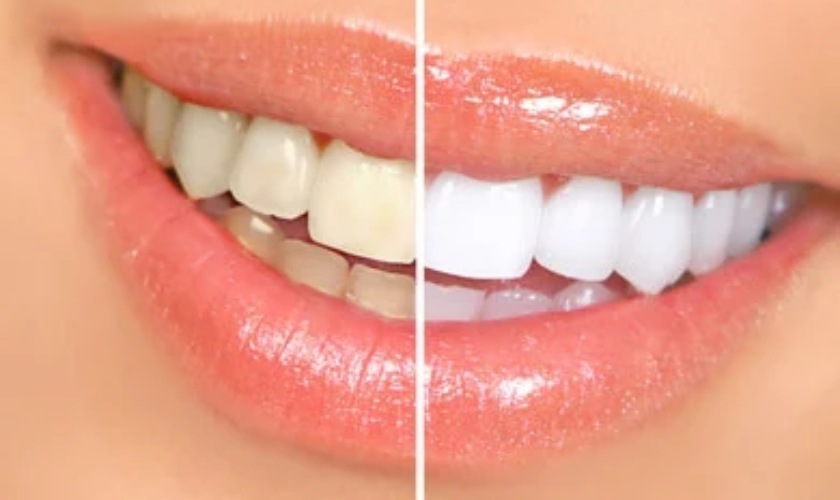
Who Is The Best Candidate For Teeth Whitening?
The allure of a radiant, pearly white smile drives many to explore the realm of teeth whitening, a cosmetic dental procedure that has captured the imagination of those seeking to rejuvenate their smile. But before you embark on this journey to a brighter, more confident you, it’s essential to understand who is the ideal candidate for teeth whitening. In this blog, we will delve deep into who makes the best candidate for teeth whitening, ensuring you have all the information you need to embark on this journey. From exploring the science behind teeth whitening to the various methods available, we’ll provide you with a comprehensive guide to achieving a dazzling smile.
What is Teeth Whitening?
Teeth whitening, also known as teeth bleaching, is a non-invasive cosmetic dental procedure that aims to lighten and remove stains or discolouration from your teeth’ enamel (the outermost layer). This process can lead to a brighter, whiter smile, significantly enhancing your appearance and boosting your self-confidence.
Over the years, teeth whitening has gained immense popularity in recent years, as a dazzling smile is often associated with youth, good health, and vitality. Whether you want to rejuvenate your smile or improve its aesthetics, teeth whitening can be an effective solution.
What Causes Tooth Discoloration?
Tooth discolouration can occur for various reasons, and understanding the causes is essential to address and prevent it effectively. Here are some common factors that lead to tooth discolouration:
Extrinsic Stains
Food and Drinks: Consumption of highly pigmented foods and beverages such as coffee, tea, red wine, and dark-coloured sodas can stain teeth over time. These items’ chromogens (colour compounds) can adhere to the enamel, leading to surface stains.
Tobacco Use: Smoking or using smokeless tobacco products introduces tar and nicotine to the mouth, which can result in brown or yellow stains on the teeth.
Berries and Sauces: Berries, like blueberries and blackberries, and deeply coloured sauces, like tomato or soy sauce, are known for their staining potential.
Acidic Foods and Drinks: Acidic items can erode tooth enamel, making it easier for stains to set in. This erosion can result from frequent consumption of citrus fruits, vinegar, or carbonated beverages.
Intrinsic Stains
Aging: As we age, the enamel on our teeth naturally thins, revealing the yellowish dentin underneath. This can lead to an overall darkening or yellowing of teeth.
Genetics: Genetics can play a role in the colour and thickness of your enamel, making some people more prone to tooth discoloration than others.
Medications: Certain medications, particularly tetracycline antibiotics, can cause intrinsic staining when they are taken during tooth development, leading to gray or brown discoloration.
Fluorosis: Excessive fluoride intake during the development of permanent teeth, either from natural sources or overuse of fluoride products, can result in white streaks or brown spots on the teeth.
Trauma and Tooth Injury: A traumatic injury to a tooth can result in discolouration. The tooth may react by producing more dentin, appearing darker than the enamel.
Poor Dental Hygiene: Inadequate brushing, flossing, and regular dental check-ups can lead to the buildup of plaque and tartar on teeth. These substances can harbour stains and cause tooth discolouration.
Ideal Candidates for Teeth Whitening
Healthy Teeth and Gums
The foundation for any successful teeth whitening procedure is good oral health. Before considering teeth whitening, ensuring your teeth and gums are in prime condition is crucial. This means avoiding issues like cavities, gum disease, or other dental problems. When your oral health is optimal, it not only ensures the safety of the whitening process but also enhances its effectiveness.
Stained or Discolored Teeth
The most common reason for pursuing teeth whitening is to address stains or discolouration that have developed over time. These stains can result from various factors, including dietary choices, lifestyle habits, and the natural ageing process. If your teeth have lost their natural lustre due to external factors like coffee or tea consumption, smoking, or red wine, you’re a prime candidate for teeth whitening.
Realistic Expectations
While teeth whitening can significantly improve your teeth’ colour, it’s essential to maintain realistic expectations about the results. The procedure’s outcome can vary depending on several factors, including the method used, the initial shade of your teeth, and your commitment to aftercare.
No Allergies or Sensitivities
Before embarking on teeth whitening, it’s crucial to determine whether you have any allergies or sensitivities to the ingredients commonly used in whitening products. Allergic reactions or sensitivities can lead to discomfort, irritation, or adverse effects during or after the treatment. Discuss any known allergies or sensitivities with your dentist during your consultation. They can select appropriate whitening products that minimize the risk of adverse reactions, ensuring your safety throughout the procedure.
Teeth Whitening Options
- In-Office Professional Whitening: This is the fastest and most effective method. It’s conducted in a dental office by a trained professional. The dentist uses high-concentration whitening agents and special equipment like laser or LED lights to accelerate the process. In-office whitening can often provide immediate and noticeable results, making it an ideal choice for individuals seeking rapid transformation.
- Take-Home Whitening Kits: These are custom-made kits provided by your dentist. They include trays moulded to fit your teeth and a lower-concentration whitening gel. You wear these trays for a specified period at home, typically for a few hours each day or overnight. Take-home kits offer professional results in the convenience and comfort of your home, although they may take longer to achieve desired results compared to in-office treatments.
- Over-the-Counter (OTC) Whitening Products: These are readily available at most drugstores and include whitening toothpaste, strips, gels, and rinses. While OTC products are generally more affordable, they may have lower concentrations of active whitening ingredients and yield less dramatic results than professional options.
- Natural Remedies: Some individuals explore natural methods like using baking soda, activated charcoal, or hydrogen peroxide for teeth whitening. These home remedies are often accessible and cost-effective but may not be as effective or safe as professional treatments. It’s essential to exercise caution when using these methods, as overuse or improper application can potentially harm your teeth and gums.
A brighter, more confident smile is within your grasp, and with the knowledge you’ve gained from this exploration, you’re better equipped to unlock its potential. The journey to teeth whitening, we’ve discovered, begins with understanding whether you fit the profile of an ideal candidate. Your oral health, the nature of your stains, expectations, and commitment to aftercare are vital in this decision. As you embark on this path, remember that teeth whitening is not a one-size-fits-all solution. It offers a spectrum of options, from professional, in-office treatments that promise rapid results to take-home kits that blend convenience with professional-grade results and even natural remedies that may suit some. So, embrace the journey, unlock your best smile, and let your inner confidence shine through your radiant, pearly whites.



